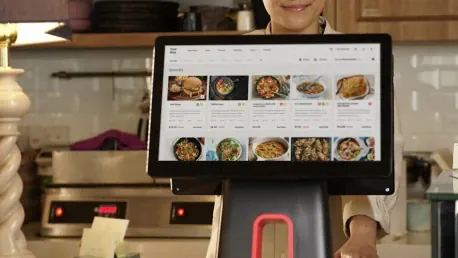The restaurant industry is experiencing unprecedented growth, with annual sales reaching a billion-dollar mark in 2024. As this sector expands, new challenges arise, and employee burnout along with the demand for high-quality service are at the forefront. To effectively tackle these issues and enhance overall operational efficiency, the integration of IoT (Internet of Things) technologies is proving to be a pivotal strategy. By focusing on improving employee well-being and elevating customer experiences, IoT is revolutionizing the restaurant landscape in ways previously unimaginable.
Addressing Industry Growth and Challenges
The restaurant industry has seen remarkable growth, adding approximately 200,000 jobs and reaching a total of 15.7 million employees. However, this surge also brings increased challenges. Rising cases of employee burnout have become a significant concern, with more than half of U.S. workers experiencing burnout in 2024, reflecting a notable rise compared to previous years. Additionally, the heightened demand for exceptional service quality places an extra burden on restaurant staff, leading to further stress and fatigue.
Fortunately, IoT-driven, human-centered technologies have emerged as a viable solution to these challenges. Integrated smart systems across restaurant operations not only enhance the work environment but also significantly boost employee well-being and productivity. IoT solutions offer real-time monitoring and automation, ensuring consistent and high-quality customer experiences. In this way, IoT fosters profitability and long-term customer loyalty by creating a more efficient and enjoyable working and dining atmosphere.
Enhancing Workplace Comfort and Employee Well-Being
Energy Consumption and Smart Climate Control
Restaurants are known for their high energy consumption due to various factors, including kitchen equipment, refrigeration, heating, and lighting. IoT-enabled energy management systems can significantly alleviate these issues. By tracking and optimizing energy usage, these systems adjust lighting and HVAC operations based on occupancy and timing, resulting in lower operational costs and improved energy efficiency. Furthermore, creating a comfortable work environment, especially during hectic shifts, is crucial to minimizing stress and enhancing employee well-being.
Deploying smart climate control systems ensures that temperature and humidity levels are optimal for employees’ comfort, preventing issues such as overheating or excessive cold. These measures not only contribute to a more pleasant working environment but also support employees in maintaining high levels of productivity and focus. By investing in such IoT technology, restaurants can create a more supportive atmosphere, ultimately leading to increased job satisfaction and retention rates.
Air Quality and Ventilation Controls
The importance of quality air and proper ventilation cannot be overstated in environments as busy as restaurants. Continuous monitoring of air quality through IoT sensors helps maintain a healthy atmosphere by detecting elevated CO₂ levels and other pollutants and automatically adjusting ventilation systems. This ensures a consistent supply of fresh air, reducing symptoms like drowsiness, headaches, and respiratory irritations among employees.
Additionally, IoT technologies play a vital role in managing VOCs (Volatile Organic Compounds) emitted from food, cooking processes, and cleaning agents. Proper management of these compounds not only enhances employee health and comfort but also creates a better environment for diners. Implementing advanced ventilation controls driven by IoT ensures that both staff and customers benefit from a cleaner and healthier atmosphere, contributing to overall satisfaction and well-being.
Food Safety and Temperature Monitoring
Temperature control is a critical aspect of maintaining both employee comfort and food safety. IoT temperature sensors adjust indoor climates automatically to accommodate changing conditions, preventing discomfort and health issues linked to Sick Building Syndrome (SBS), which includes symptoms such as eye, nose, and throat irritation. Utilizing these technologies ensures a healthier work environment and prevents disruptions caused by equipment malfunctions or manual adjustments.
Moreover, IoT solutions are essential in monitoring refrigeration units in real-time, preventing food spoilage and ensuring compliance with health regulations. Automated alerts notify staff of temperature fluctuations, allowing for prompt action to avert potential food safety risks. This not only preserves the integrity of food served to customers but also supports the health and efficiency of the kitchen staff, aligning with the goals of enhanced well-being and operational effectiveness.
Sound Masking Technology
The work atmosphere in restaurants can often be noisy and distracting, contributing to employee stress and decreased productivity. IoT-enabled sound masking systems provide a solution by managing ambient noise levels, creating quieter and more private workspaces. By incorporating these technologies, restaurants can significantly minimize auditory distractions, allowing employees to concentrate better on their tasks.
Sound masking not only promotes mental well-being by reducing the cognitive load caused by constant noise but also helps in reducing burnout among staff. Additionally, improved noise control benefits customers by creating a more pleasant and serene dining ambiance. These measures ultimately contribute to a holistic improvement in both employee satisfaction and customer experiences.
Transforming Customer Experiences with IoT Integrations
Customization Lighting and Ambience
Creating a memorable dining experience for customers relies heavily on the atmosphere of the restaurant, and IoT technologies excel in this area. Adaptive lighting systems can personalize and transform dining spaces, transitioning seamlessly from bright and energizing during lunch hours to warmer, more relaxing tones in the evening. This level of customization not only enhances the dining experience but also aligns with the preferences and moods of different customer segments throughout the day.
Moreover, these IoT-enabled lighting adjustments can be pre-configured into specific “Scenes” tailored to different zones within the restaurant. This ensures that each area offers a distinct and suitable ambiance, whether it’s a romantic dinner or a business lunch. Such technological enhancements in lighting and ambiance play a crucial role in setting the right tone for a restaurant, thereby elevating the overall guest experience and encouraging repeat visits.
Occupancy Tracking for Optimized Service
One of the key aspects of delivering excellent customer service is efficient table management, and IoT technologies shine in this domain as well. Real-time occupancy tracking through IoT sensors allows restaurants to monitor the flow of guests and manage table assignments more effectively. This prevents overcrowding, reduces wait times, and ensures a consistently smooth service throughout busy and quiet periods alike.
By utilizing data-driven occupancy tracking, restaurants can balance guest seating, avoiding bottlenecks and enhancing the dining experience. Additionally, these systems enable staff to provide more personalized service by understanding guest preferences and predicting peak times. Through loyalty programs and customized menu offerings, data gleaned from IoT integrations allows restaurants to tailor services and marketing strategies. This fosters long-term customer relationships, boosts satisfaction, and cultivates a loyal customer base.
Efficient Food Safety Practices
IoT technologies offer numerous advantages in streamlining restaurant operations, particularly in areas such as scheduling, food monitoring, and inventory management. Automated inventory systems, for instance, enable precise tracking of stock levels and expiration dates, thereby reducing food waste and enhancing the quality of dining experiences. These advanced systems ensure that restaurants consistently serve fresh, high-quality meals by providing timely alerts regarding inventory replenishment.
Monitoring systems play a critical role in maintaining food safety by detecting even the slightest temperature fluctuations in refrigeration units. Such real-time insights ensure compliance with health and safety regulations, minimizing the risks associated with food spoilage. By adhering to stringent safety standards, restaurants can build and maintain customer trust, ultimately securing repeat business and positive word-of-mouth.
Win-Win Impact of IoT: Enhancing Profitability and Efficiency
The restaurant industry is witnessing exceptional growth, with annual sales expected to hit the billion-dollar mark by 2025. As this sector booms, it faces new challenges, particularly employee burnout and the rising demand for outstanding service. To address these issues and boost overall operational efficiency, the adoption of IoT (Internet of Things) technologies is emerging as a crucial solution. IoT facilitates the seamless integration of smart devices and real-time data monitoring, allowing restaurant owners to streamline operations and manage their workforce more effectively.
For example, IoT can automate routine tasks, such as inventory management and temperature control in kitchens, which helps reduce the workload on employees and prevent burnout. Additionally, IoT can enhance customer experiences by personalizing services, adjusting ambiance settings like lighting and music, and providing quicker, more accurate service through automated ordering systems. This advanced technology not only ensures employees are more focused and less stressed but also elevates the dining experience for customers, setting new standards in the industry. As IoT continues to evolve, it’s reshaping the restaurant landscape in innovative and previously unimaginable ways. Treated as more than just a convenience, IoT is now a vital tool for restaurants aspiring to stay competitive and thrive in this rapidly growing market.









